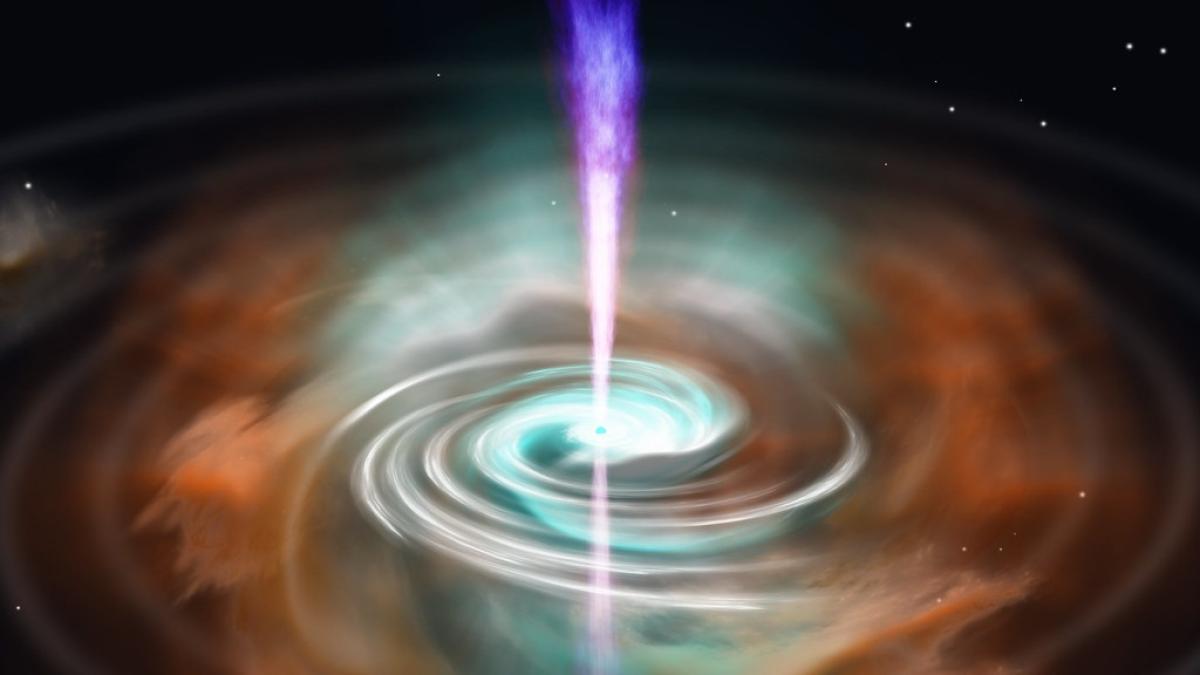Astronomers studying the powerful gamma-ray burst (GRB) using the Gemini South telescope, managed by the US National Science Foundation (NSF) NOIRLab, may have discovered unprecedented way to destroy a star, It was also published in the journal Nature Astronomy.
Unlike most GRBs, which result from the explosion of massive stars or the random merger of neutron stars, the astronomers concluded that the GRB It was caused by colliding stars or stellar debris in the crowded environment It surrounds a supermassive black hole at the heart of an ancient galaxy.
Most stars in the universe die in a predictable way, depending on their mass. stars of relatively low massLike our sun, they shed their outer layers as they age, eventually fading into white dwarfs.
More massive stars burn harder and die sooner in catastrophic supernova explosions, creating extremely dense objects like neutron stars and black holes. If two of these stellar remnants form a binary systemThey could end up colliding. However, new research points to a fourth option, long hypothesized but never seen before.
In search of the long-range gamma-ray burst (GRB) origins, astronomers used the Gemini South telescope in Chile, part of the Gemini International Observatory operated by NSF’s NOIRLab, and other telescopes, evidence of a collision Stars or stellar debris similar to the slump in the chaotic and dense region near the supermassive black hole of an ancient galaxy.
According to Andrew Levan, an astronomer at Radboud University in the Netherlands and lead author, “These new findings show that stars can meet their end in some of the densest regions of the universe, where they can be pushed to collide. It is interesting to understand how stars die And to answer other questions, such as the unexpected sources that might create the gravitational waves that we can detect on Earth.”
Ancient galaxies are long past their star formation stage and will have few, if any, giant stars left that are the main source of long-running GRBs. However, the cores are full of very dense stars and stellar debris, such as white dwarfs, neutron stars, and black holes.
Astronomers have long suspected it in turbulence a hive of activity surrounding a supermassive black hole, It will only be a matter of time before two stellar objects collide to produce a GRB. However, evidence for this type of fusion has been elusive.
The first indications that such an event occurred was observed on October 19, 2019, when NASA’s Neil Gehrels Swift Observatory detected a bright gamma-ray flash that lasted just over a minute. Any GRB lasting more than 2 seconds is considered “long”. Such explosions usually come from dying supernova stars at least 10 times the mass of our Sun — but not always.
The researchers then used Gemini South to make long-term observations of the GRB’s glow to better understand its origins. The observations allowed astronomers to locate the GRB In a region less than 100 light-years away from the nucleus of an ancient galaxy, which makes it very close to the galaxy’s supermassive black hole. The researchers also found no indication of a similar supernova, which would have left its mark on the light studied by Gemini South.
“Our later observations told us that rather than the collapse of a massive star, the explosion was most likely caused by the merger of two compact bodies,” Levan explains. By locating it at the center of a previously identified ancient galaxy, we have obtained the first tantalizing evidence of a new star trail disappearance.”
In normal galactic environments, collisions of GRBs result from stellar remnants, such as Neutron stars and black holes are extremely rare. However, the cores of ancient galaxies are not normal, and there may be a million or more stars crammed into a region only a few light-years across.

“Proud web fanatic. Subtly charming twitter geek. Reader. Internet trailblazer. Music buff.”

:quality(85)/cloudfront-us-east-1.images.arcpublishing.com/infobae/TEQF6EONZRFGLLLDIDD4L2O4EE.jpg)

:quality(75)/cloudfront-us-east-1.images.arcpublishing.com/elcomercio/XU32LRAEZFDDPNVHLFU3CKVBYY.jpg)



More Stories
How to create 3D videos with my iPhone, it will be very useful even for your business
NASA discovers an anomaly in the Earth’s magnetic field that could have serious consequences for humans
Can the Earth be divided into two parts?